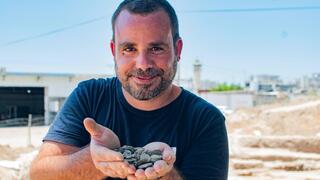Evidence of the Gallus Revolt, the last Jewish resistance against Roman rule was uncovered in Lod on Sunday. The dramatic discovery – a large public building, in whose foundations a 1650-year-old hoard was hidden, will be publicized in a new book commensurate with the annual Central Israel Region Archaeological Conference, open to the public free of charge. 3 View gallery The building that was discovered ( Photo: Israel Antiquities Authority ) The conference will be held in the Eretz Yisrael Museum in Tel Aviv and jointly hosted by Tel Aviv University, Bar Ilan University, and the Israel Antiquities Authority.
An excavation on Nordau Street in Lod, led by the Israel Antiquities Authority and funded by the Lod Municipality, uncovered a public building from the Late Roman—Early Byzantine period that suffered violent destruction. Its foundations held 94 silver and bronze coins dating 221-354 CE, which were deliberately placed there – in the hopes of returning to collect them when the situation calms. The latest coins are dated from the time of the Gallus Revolt (351-354 CE).

Though written evidence is sparse regarding this revolt, there are texts reporting that major Jewish communities such as Lod, Zipori and Tiberias were destroyed by the forces of Roman Ceasar Flavius Constantinus Gallus. Among the various finds in the building were impressive stone and marble artifacts; Greek, Hebrew and Latin inscriptions, and one inscription bearing the name of a Jewish man from a pri.
















